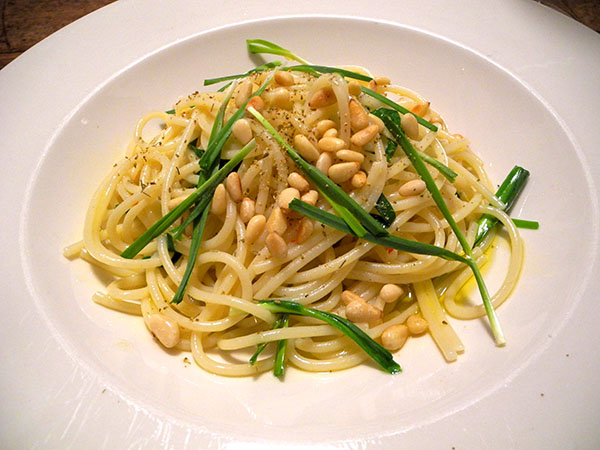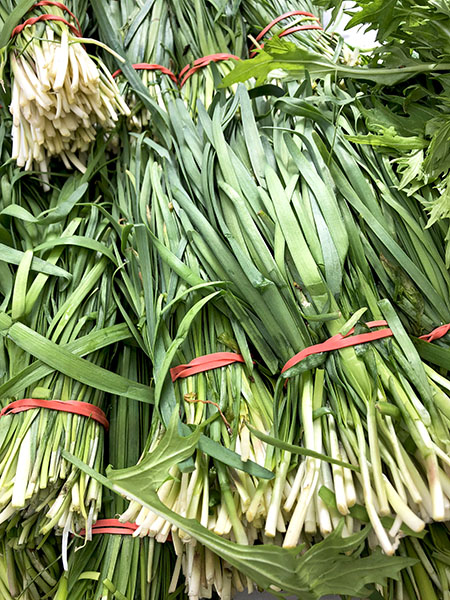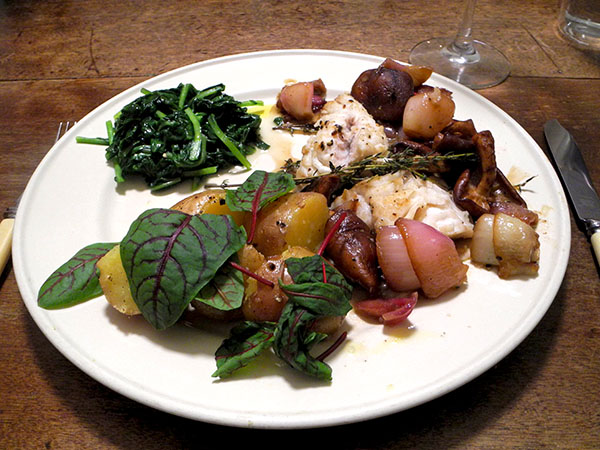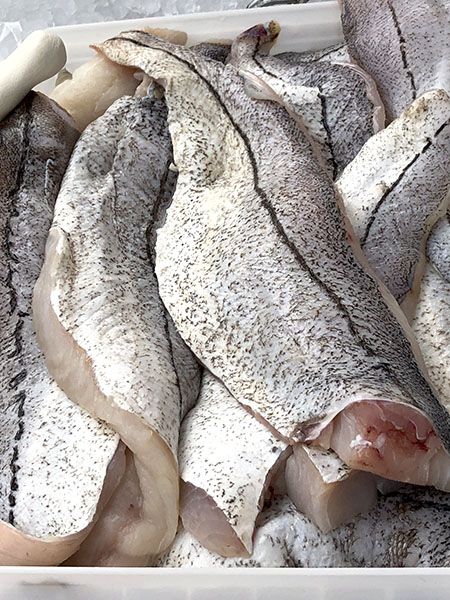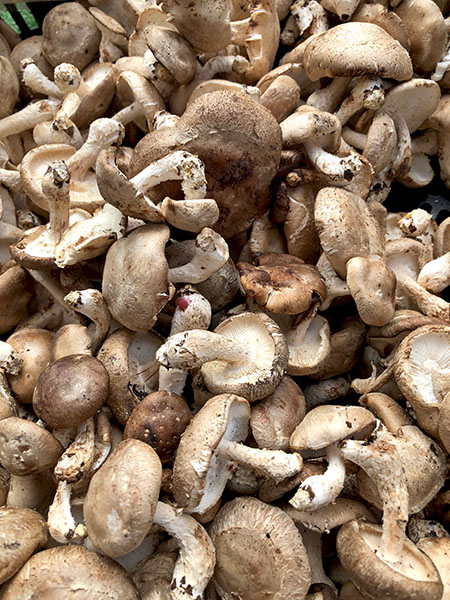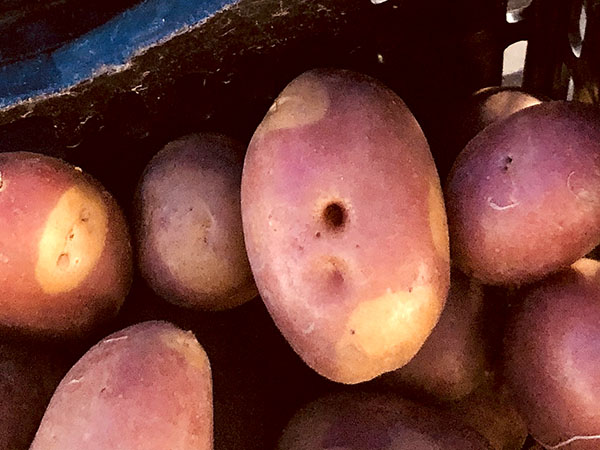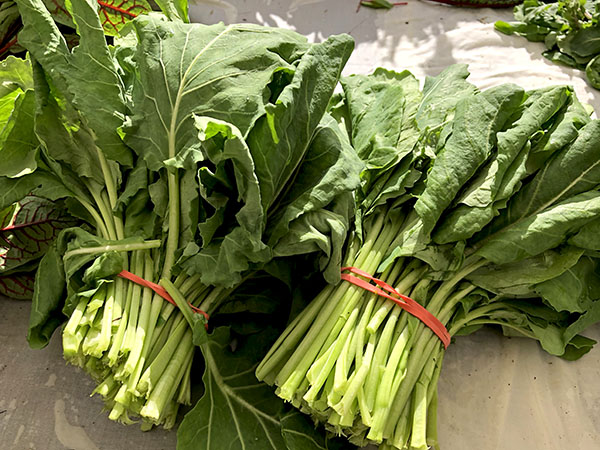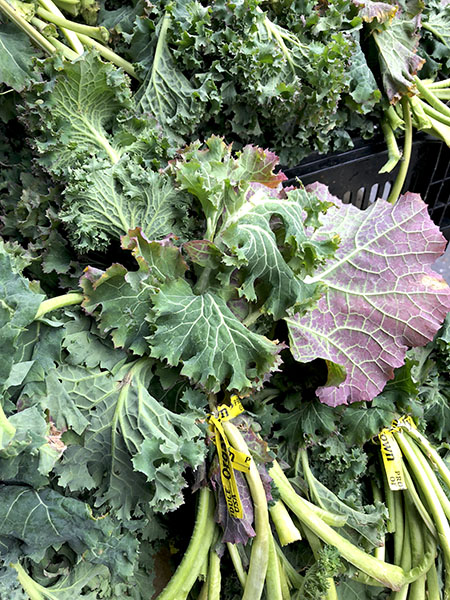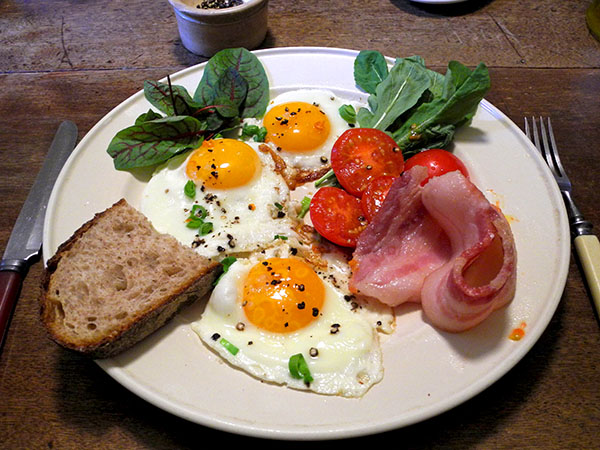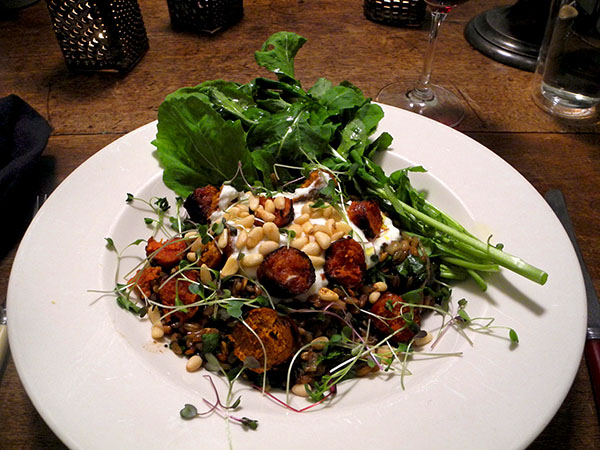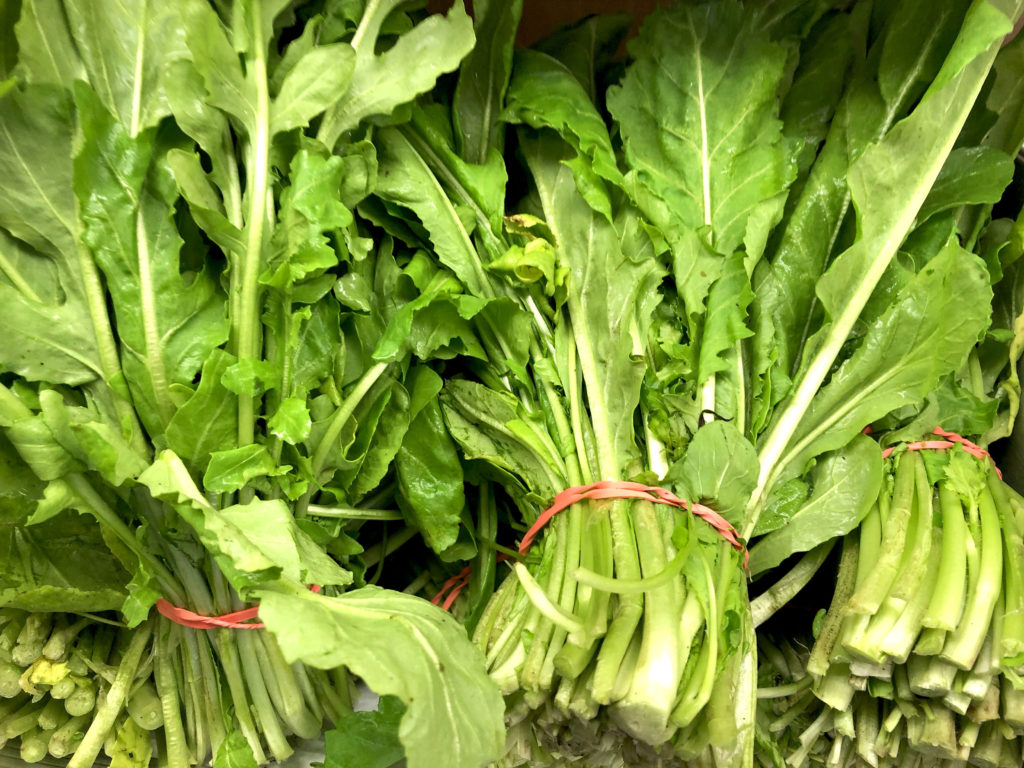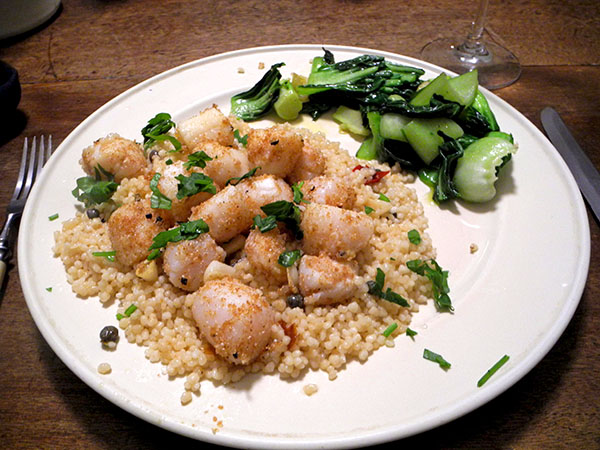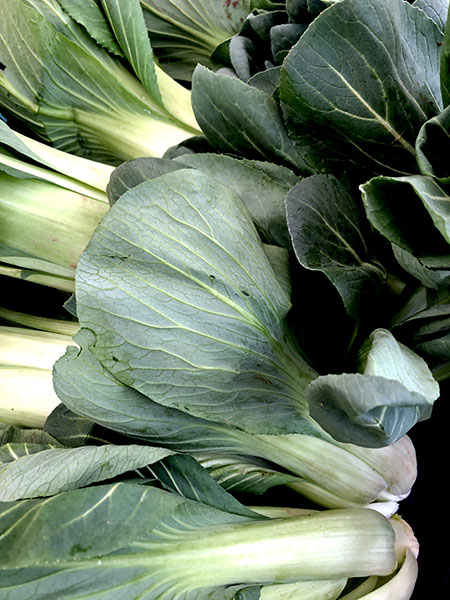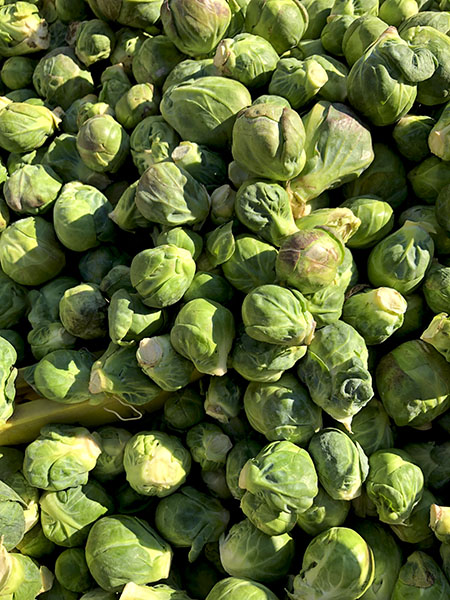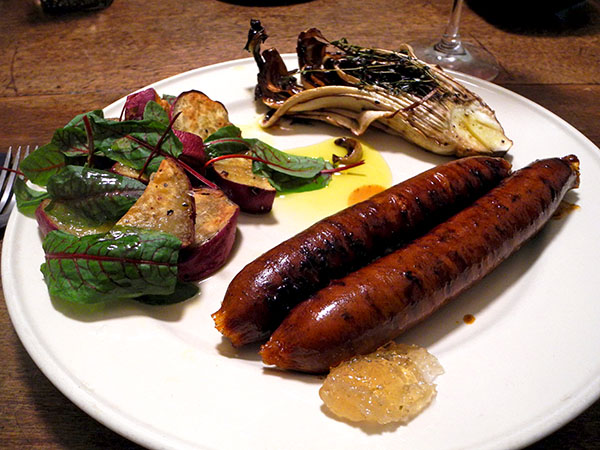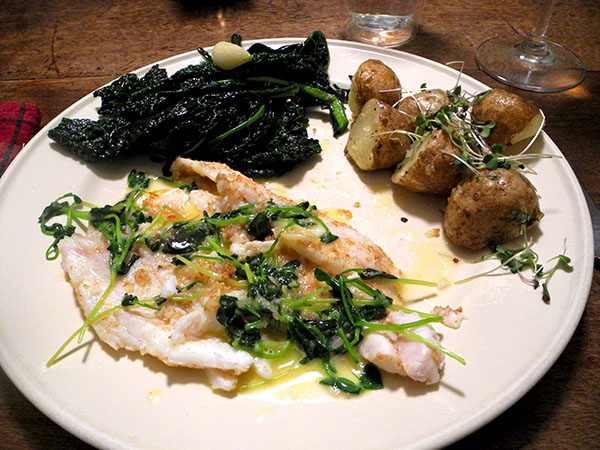
There are 7 earlier entries on this blog that spell this fish as ‘grey sole’ and 6 that use the form, ‘gray sole’. Supposedly the former spelling is used overwhelmingly in the U.K. and Canada, the latter just as frequently in the U.S., but somebody forgot to tell the fisher people on eastern Long Island. Perhaps the responsibility for the anomoly, if it is an anomoly, can be laid on the particularly New England features of Suffolk county culture, and the particularly English features of the culture of New England itself.
On this site, at least going forward, I’ve decided to go with the spelling used by my fishers: That means that yesterday I bought some beautiful ‘grey sole’.
There was also a surprising amount of green on the plate for the last day of February, all fresh from local farmers (there was no question about the proper spelling of ‘green’).
There were the pea greens in the sauce served with the sole..
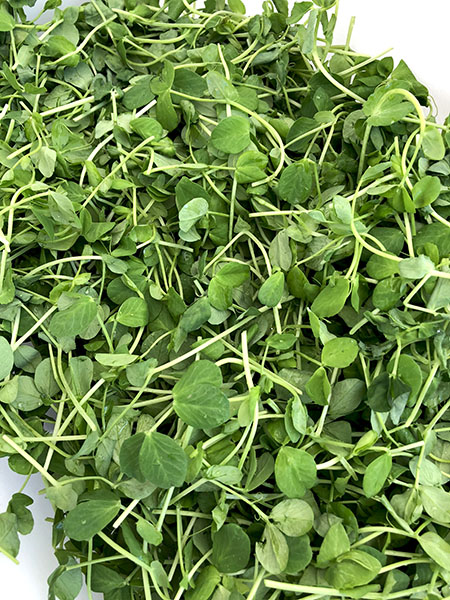
..the dark green of the vegetable that accompanied it..
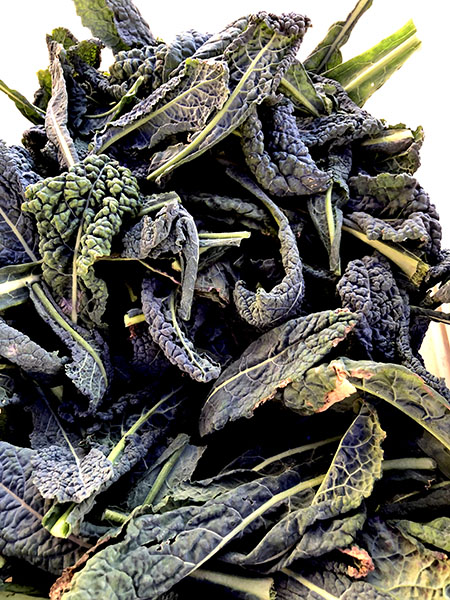
..and the tiny ‘rainbow micro greens’..
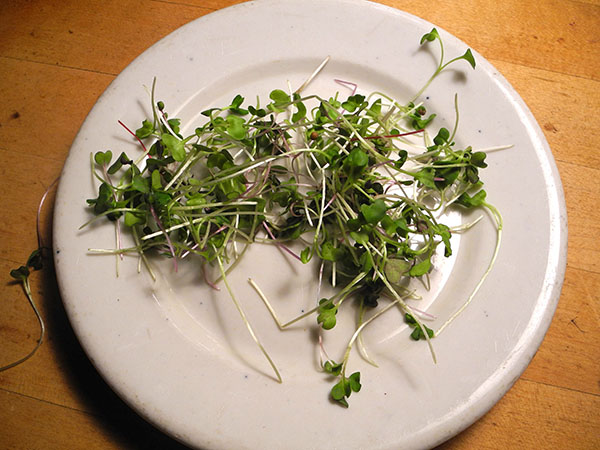
..that garnished the very un-green potatoes..
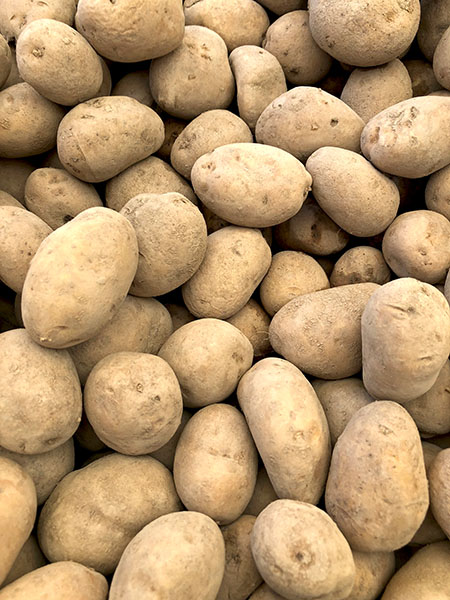
..but the really spectacular color disappeared before we sat down: the incredibly sweet baby carrots which our farmers of Windfall Farms had dug up from their thawed soil in Montgomery County the day before we enjoyed them, as crudités before the entrée.
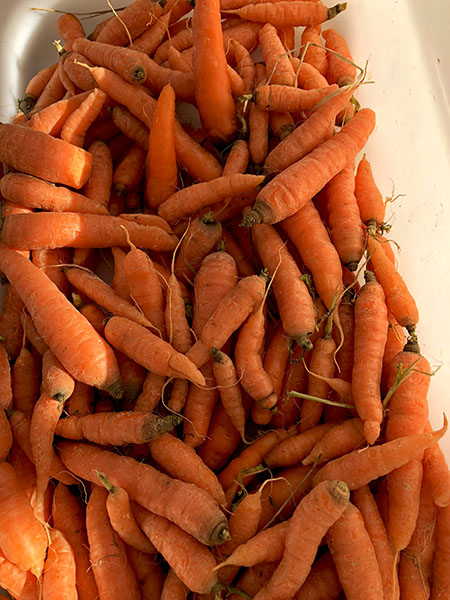
After the carrots, the meal went like this.
- four small grey sole fillets from P.E. & D.D. (a total of 12 ounces), dried thoroughly, salted on both sides and brushed with a little good Italian white wine vinegar, coated with a thin layer of a local whole wheat flour from the Blew family of Oak Grove Mills in the Union Square Greenmarket and sautéed over a medium-high flame inside a heavy vintage oval tin-lined copper pan in 2 or 3 tablespoons of olive oil, turning once, the fillets removed and the pan wiped with a paper towel, then 2 tablespoons of Organic Valley ‘Cultured Pasture Butter’, 3 tablespoons of juice from an organic Whole Foods Market, and and a loose handful of pea greens from Windfall Farms, allowed to warm inside of it for a minute or so, either over a low flame or none at all, the sauce then drizzled onto the sole
- six small Maine-bred ‘Kennebec‘ potatoes from Keith’s Farm, boiled with a generous amount of salt until barely cooked through, drained, halved, dried while still inside the large still-warm vintage Corning Pyrex Flameware blue-glass pot in which they had cooked, tossed with 2 tablespoons or so of the Organic Valley butter, sprinkled with sea salt and freshly-ground black pepper, garnished with rainbow micro greens from Windfall Farms
- one small bunch of cavalo nero from Norwich Meadows Farm, wilted briefly inside a large vintage tin-lined copper pot in a tablespoon or so of olive oil in which 2 cloves of Keith’s Farm Rocambole garlic had first been heated, seasoned with salt and pepper, drizzled with a little more oil
- the wine was a California (Clarksburg) white, Richard Bruno Clarksburg Chenin Blanc 2016, from Naked Wines
- the music was Joseph Bodin de Boismortier’s 1729 Sonate per fagotto e continuo, Op. 50, and his Pièces de clavecin, Op. 59, published in 1736, in an album featuring performances by Pietro Pasquini, Claudio Verh, and Paolo Tognon
